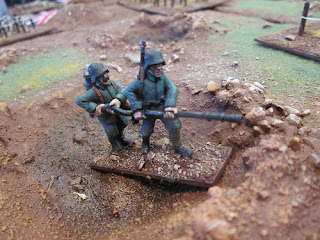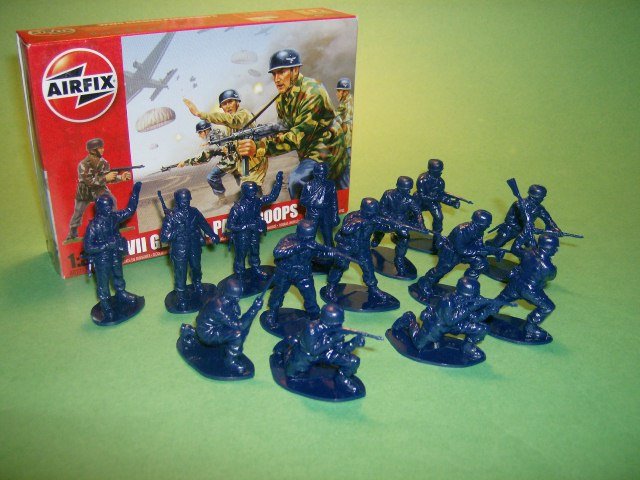Toys for the Boys
Another year almost done, and with the next fast approaching I'm reflecting on all that has happened both on the gaming table and off. Both boys are doing well, and the other day I bought them a couple of packs of Airfix British and German paras. They've been pushing them around on the living room floor, making same sorts of moves, noises, and strategies that I recall doing forty or more years ago. Despite the invention of video games and many other puerile entertainments in the intervening decades, I get the impression that deep down small boys have not changed all that much.Bite and Hold (Through the Mud and the Blood) Battle Report
A belated battle report dating from about fifteen weeks ago. The evening I ran the game I unexpectedly got a call asking me to fill in as an emergency lecturer at a local college. I'd taught the subject five years ago: World History to 1500. The result was a litte more money in the bank, but also the end of my gaming for three months while we raced through a few million years of history. Anyway, just before all that started I ran a Late War scenario using Through the Mud and the Blood. British forces had penetrated the German front line and were regrouping, awaiting an expected German counter-attack. British units were allowed to set up anywhere within the German line, including a pillbox. British reinforcements would come on by dice roll in later turns. This was to simulate the arrival of units that had become lost or disoriented in the attack. They could come along any one of three sides of the playing area, except in the vicinity of the German communications trenches.The results were less than glorious for the British side with a lack of coordinated defense perhaps best summing up the reasons for their defeat. Rather than using the abandoned pill box as a strong point, the British commanders decided to place a lone sniper there. The Germans had the advantage of being able to pick their entry point, again on any one of three sides except no-mans-land.
As a game it was something of an uphill battle for me as umpire, with eight players, most of whom had never used the rules before. The lessons learnt? Keep it simple, especially for beginners, keep it small (probably four players max) and try to know the rules like the back of your hand.
The good thing was I got to employ some recently painted figures, including light and heavy flame throwers. I'd used Sidney Roundwood's tutorial on how to make jets of flame. These turned out rather nicely and looked spectacular on the table. The German flame throwers were absolutely devastating, particularly when firing down the length of trenches crowded with cowering and demoralized British infantry. The Hun side delighted in the resulting carnage. The Brits were less than enthusiastic. Anyway, below you'll find some of the images of the game, generously provided for me by fellow-gamer Rene (gleeful German combat engineer behind the flame thrower).
 |
British rifle grenadiers approach the German trench |
 |
British infantry inch their way towards the lurking Bosch |
 |
Agents of death: A German heavy flame thrower |
 |
No chance to escape |
2013 Analogue Hobbies Painting Challenge
I'm lucky enough to have been included among the few, the brave, etc. for the annual Analogue Hobbies painting challenge. I didn't quite make the cut last year - but this year Curt kindly recalled my interest and invited me in.My goal? I've still got more figs to paint up for the Great War scenario I hope to run here in San Diego at Kingdom Con. It will be a Late War action involving a combined arms attack by the British - tanks and infantry - against a German-held fortified village. We may also try second game to recreate a variant on the first recorded tank battle in history, which took place at Villers-Bretonneaux in 1918. My other big project stems from my reading of Jean-Paul Pallud's Osprey Elite Ardennes 1944: Peiper and Skorzeny. I'd bought some Bolt Action Fallschirmjager and Waffen SS on impulse a few months ago. Initially I'd thought of using the FJ for scenarios from the campaign in Italy. Then it occured to me I had some of the raw figures necessary for recreating the Ardennes battles of late 1944. Part of this will involve crafting a suitabe terrain mat and also some other terrain features. It should be a busy few months








